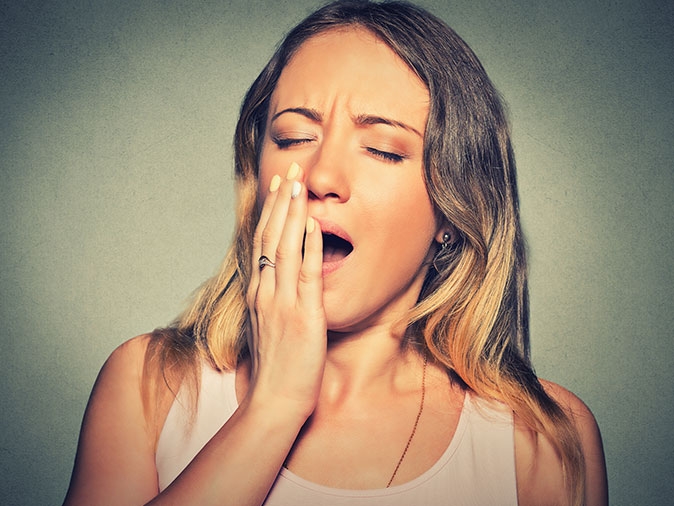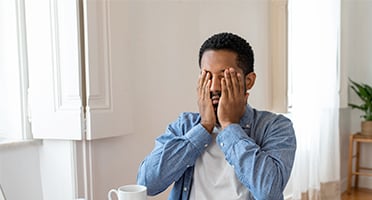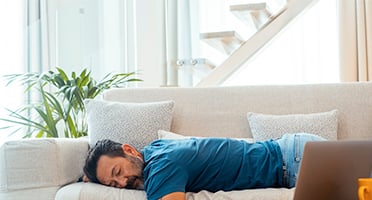Obstructive sleep apnea (OSA), like many other diseases and medical conditions, manifests differently in men and women. While this type of sleep apnea is the most common sleep disorder in the world, it does look different in women than men. Also, while men are more likely to develop OSA, many women have it but go misdiagnosed or undiagnosed for many years because of various factors that will be explored here.
If you suspect you have sleep apnea, you can order a home sleep test that can be done in the privacy of your home over two nights. You no longer have to drive to a sleep lab and have sleep technicians monitor your sleep for 8-10 hours.
Sleep apnea diagnosis and treatment have seen many advances in recent years, and being able to be sleep-tested in your own home is leading many people to get an “official” obstructive sleep apnea diagnosis that they otherwise would not have gotten. After all, no one wants to sleep in a lab hooked up to wires and machines all night.

Many Women Have OSA but Don’t Know It
According to an article on the Forbes Health website, “Of the 22 million sleep apnea diagnoses yearly, over half are in men. But that doesn’t mean women don’t have a serious sleep disorder, which causes your breathing to stop or become very shallow for short bursts during sleep.
Substantial evidence in recent years suggests the prevalence of sleep apnea in women is higher than previously believed. The Society for Women’s Health Research estimates that one out of every five women has sleep apnea. The majority—nine out of 10—are unaware of their condition and, as such, their increased risk for serious health conditions.”
Two Main Differences Between the Genders
Christine Won, M.D., Director of the Women’s Sleep Health Program at Yale Medicine New Haven, Connecticut, has pointed out there are two main differences between men and women when it comes to obstructive sleep apnea:
- Women are more likely to have sleep apnea during REM sleep than during NREM sleep. REM sleep refers to “rapid eye movement,” the dream-like period of sleep in which more brain energy is used. NREM occurs before REM and is a more shallow sleep consisting of three stages. Dr. Won states, “…during REM sleep, the apneas tend to be more severe, meaning longer, and associated with significant drops in oxygen levels.”
- Women may be more prone to upper airway resistance syndrome, a less severe case of OSA. Dr. Won explains, “In this disorder, women still have snoring and collapsible airways, but they do not have frank apneas (a respiratory event where breathing has completely ceased) and do not have oxygen level drops.” Airway resistance still leads to awakenings and sleep fragmentation during the sleep cycles.
Effects of Obstructive Sleep Apnea
If left untreated, both men and women may experience many effects of untreated sleep apnea, including, but not limited to:
- Snoring
- Daytime sleepiness
- Fatigue
- Restlessness
- Waking in the night gasping/choking for air
- Trouble concentrating
- Irritability
- Mood swings
- Depression
- Anxiety
- Headaches
- Sexual dysfunction
Major medical conditions may develop if sleep apnea is left undiagnosed and untreated:
- Heart disease
- High blood pressure
- GERD (Gastro Esophageal Reflux Disease)
- Mood disorders (anxiety, depression, lability of mood, commonly referred to as mood swings)
- Type II Diabetes
- Stroke
- Obesity
- Metabolic Syndrome (characterized by a combination of high blood pressure, high cholesterol, high blood sugar, and a large waist circumference)
Order a Home Sleep Test Today
Why suffer from this highly treatable sleep disorder any longer? You can order a home sleep study, and we will provide results to a sleep apnea treatment provider near you. With the gathering of information over two nights of sleep, your sleep apnea treatment provider will have sufficient data to evaluate your sleep and devise a customized treatment plan for you.

Feeling tired all the time, even after a full night’s sleep? You might be suffering from sleep apnea. Discover how an at-home sleep test can help diagnose the root cause of your fatigue—and get you back to feeling like yourself.

Spring is here—and so is the pollen. For the millions dealing with seasonal allergies, the symptoms can be more than just annoying. And if you also have sleep apnea, those stuffy nights and restless sleep can get even worse.
Let’s take a closer look at how spring allergies and sleep apnea affect each other—and what steps you can take to sleep more comfortably.




